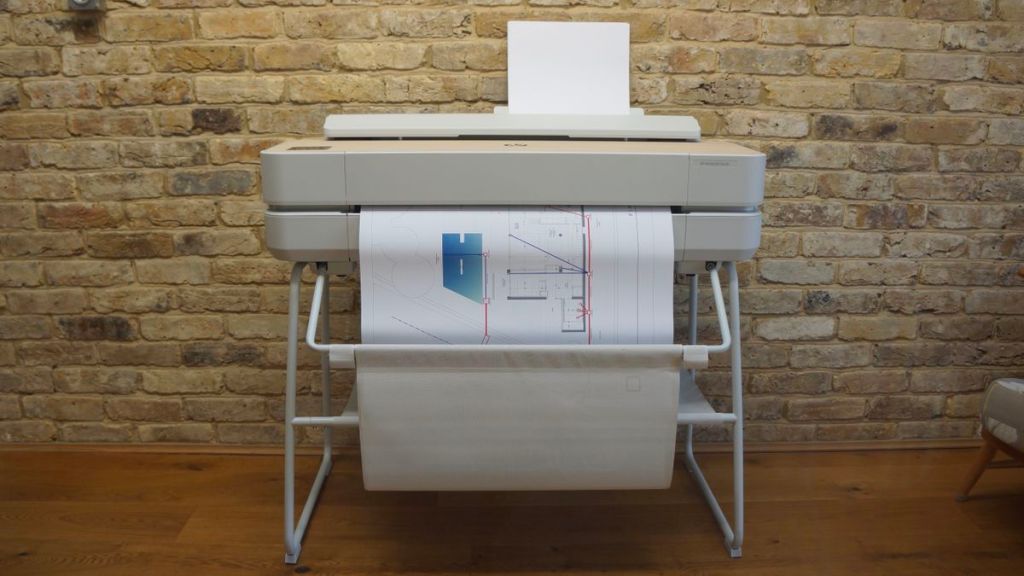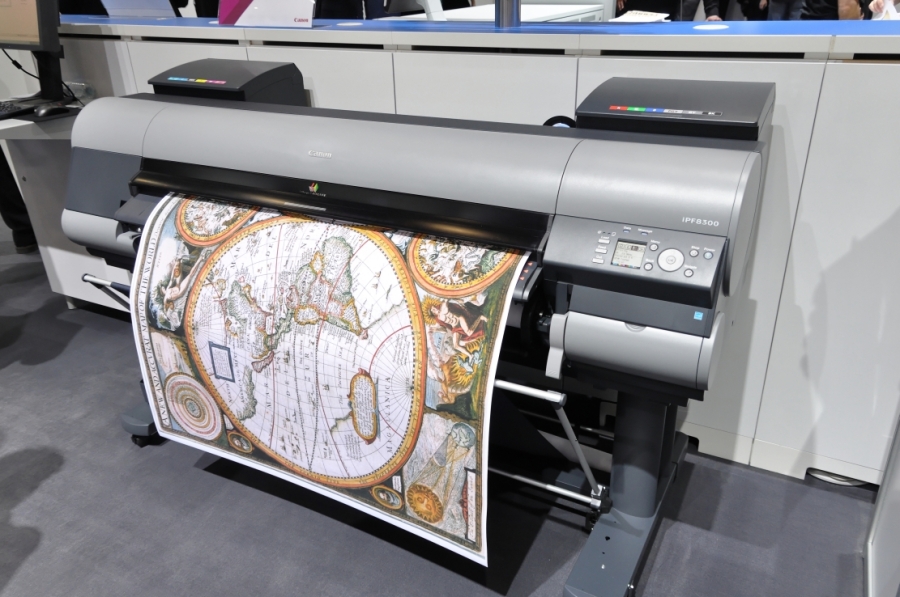Each business has unique printing requirements. In certain cases, print jobs are primarily for internal use. If your business occasionally requires large print jobs, it would be practical to outsource these tasks as necessary. If you frequently print materials that exceed 60cm in width, it’s best to get a wide format printer. These printers, sometimes called plotters, can easily print in wide formats in both colour and black and white on various materials. They can accommodate widths ranging from 60cm to 150cm or even more.
What’s a Wide-format Printer?

Large or wide format printers are devices that allow you to print projects in a larger size onto various types of media. This type of printer works similarly to a regular home printer but on a much bigger scale. However, there are more options for different types of prints available with large format printers. There are four main print methods used in wide format printing: laser, dye sublimation, plotter, and inkjet.
Inkjet printers are the most commonly used in various industries as they are similar to standard home printers but can print on a wider range of materials, including fabrics and poster boards. Dye sublimation printers inject ink directly into the media, resulting in high-resolution and durable prints. A wide format printer is often preferred by construction and architectural services. Laser printers offer faster print speeds and lower cost per print, although the initial equipment cost is usually higher.
What Can You Print With a Wide Format Printer?
Some of the products you can print using a large-format printer include banners (such as roller and mesh banners), wallcoverings, posters, hoardings, floor coverings (both indoor and outdoor), self-adhesive vinyl, window films, architectural plans and AutoCAD prints.
How Large is the Format?
A large format printer is designed to handle larger paper sizes like A0, A1, and A2. A0 measures 118.9cm x 84.1cm, A1 measures 84.1cm x 59.4cm, and A2 measures 59.4cm x 42cm. But some really big format printers can handle even wider widths, up to 1.52m, and paper rolls that are around 30m long.
However, when you come across sizes, this doesn’t only refer to the size of the paper. These large format printers can also handle vinyl and other types of media. So, if you’re thinking of buying a printer, it’s important to consider not just the print jobs you have now, but also the ones you might have in the future. Maybe you think an A1 printer is enough for you right now, but is that because it’s all you’ve needed so far or because your current printer can’t handle larger sizes? If you had a printer that could print wider, you could potentially take on a wider range of projects.
Why Invest in a Large Format Printer?

Boost Your Printing Capabilities
With a large format printer, you can handle a wide variety of print materials such as floor graphics, stickers, banners, posters, signs, and even technical plans. Some models even have niche features like printing on corrugated PVC boards, which are commonly used for estate agent boards.
If you run a print business, having the ability to print on a greater range of media can be crucial. This is especially true if your print shop is located in an area with potential customers who would benefit from your ability to print on different types of media or at a larger scale compared to your competitors.
Speed Up the Process
Every printing business has limitations due to their printers. However, it’s not just about the fact that a faster printer allows you to handle more work and complete it promptly. Opting for a printer that can deliver at a faster pace could have the following benefits:
• It could save you from needing to buy a second identical machine.
• It could allow you to invest in printers with additional or alternative capabilities.
• It could reduce the space occupied by your printers, potentially allowing you to operate from smaller and more affordable premises.
Get More Done In-House
If you own a print shop, investing in a new large-format printer can open up new possibilities for expanding your services and improving your service delivery. However, you don’t have to be in the print industry to reap the benefits of owning a large format printer. The key factors to consider are cost, quality, and control. If you find yourself consistently facing high monthly print bills, purchasing your large format printing machines can lead to significant savings.
More Sustainable Work
Consider working more sustainably by prioritizing eco-friendly practices. While newer models often boast improved energy efficiency, it is important to not solely rely on this aspect when upgrading your large format printer. Instead, take this opportunity to reassess your current processes and explore how a new printer can contribute to a more sustainable workflow.
